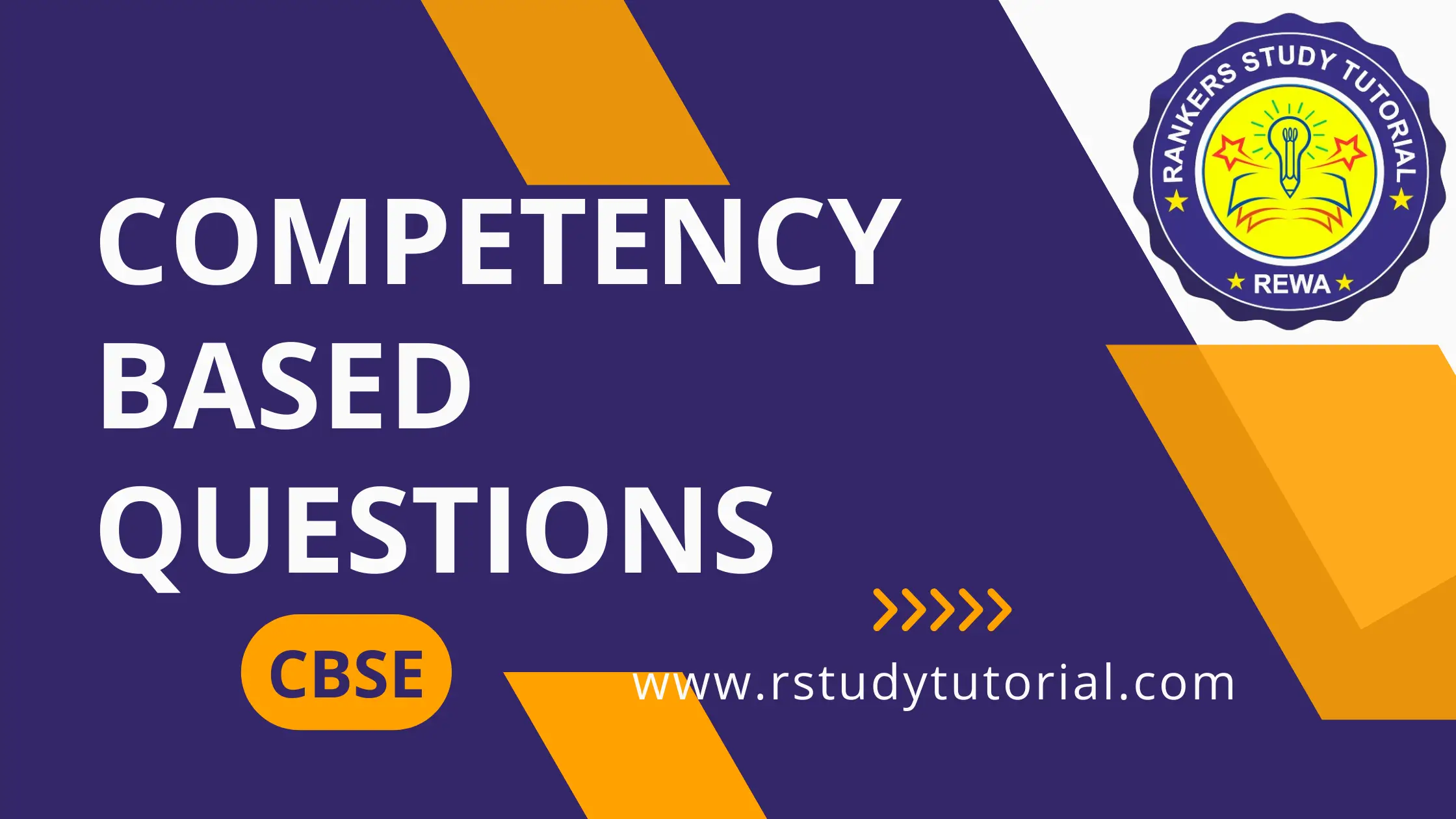Hint: Identify the type of joints in human body & the extent of their motion.
Question.1. The image shows a joint found at the elbow.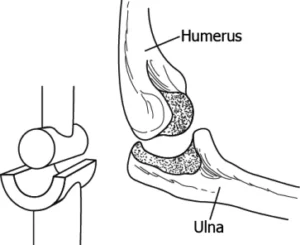
(a) Ball and socket
(b) Fixed
(c) Hinge
(d) Pivot
Question.2. A student observed a joint in the head of the body.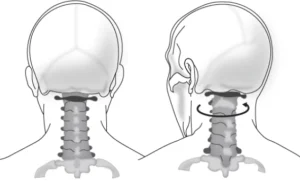
(a) No, as hinge joints are present in the head area.
(b) No, as pivotal joints are present in the jaw portion only.
(c) Yes, as it allows the individual to move its head in all directions.
(d) Yes, as it allows forward and backward bending and right or left turning.
Ans.1. (c) Hinge
Ans.2. (d) Yes, as it allows forward and backward bending and right or left turning.
Hint: Compare and contrast between bones in different parts of human body.
Question.3. Backbone extends through most of the body. The image shows the human backbone.
(a) Backbone is made of many small bones, while the femur is a long bone.
(b) Backbone is a long bone, while the femur is made of many small bones.
(c) Backbone is the smallest bone of the body, while the femur is the longest bone.
(d) Backbone is the longest bone of the body, while the femur is the smallest bone.
Question.4. The image shows the bones from the elbow and leg region.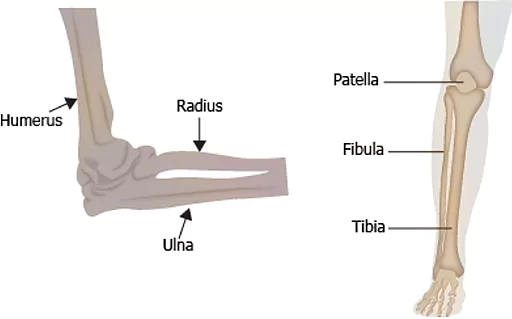
(a) The bones of both regions have the same length.
(b) The bones of both regions can move in all directions.
(c) The bones of both regions have the same types of joints.
(d) The bones of both regions are attached to the pelvic girdle.
Ans.3. (a) Backbone is made of many small bones, while the femur is a long bone.
Ans.4. (c) The bones of both regions have the same types of joints.
Hint: Identify the structure and function of skeletal system.
Question.5. How does the structure of the skeleton system support the body?
(a) It protects the outer skin of the body from any injury.
(b) It provides a framework that gives shape to the body.
(c) It provides the site for storing all the nutrients in the body.
(d) It allows free movement of all the bones during locomotion.
Question.6. The table lists the role of different systems of the body.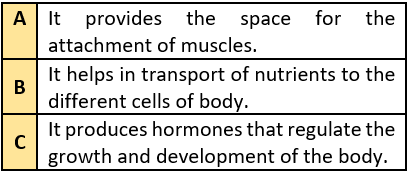
(a) A only
(b) B only
(c) A and C
(d) B and C
Ans.5. (b) It provides a framework that gives shape to the body.
Ans.6. (a) A only
Hint: Demonstrate how muscles work in order to explain its functions.
Question.7. Muscles work in pairs. They contract and relax simultaneously. How does this help an individual?
(a) It assists in the formation of the bones.
(b) It prevents any injury to the internal organs.
(c) It allows the movement of bones at the joints.
(d) It helps in the absorption of nutrients in the body.
Question.8. The image shows how the muscles help in the movement of the arm.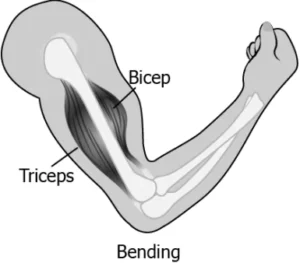
(a) Both bicep and triceps relax
(b) Both bicep and triceps contracts
(c) The bicep contracts while triceps relax
(d) The bicep relaxes while triceps contracts
Ans.7. (c) It allows the movement of bones at the joints.
Ans.8. (c) The bicep contracts while triceps relax
Hint: Predict the classes that different organisms belong based on their movement.
Question.9. A student observe the movement of an organism that lacks bones.
(a) Ant
(b) Cockroach
(c) Earthworm
(d) Snake
Question.10. The table lists the characteristic features of body movements of various organisms.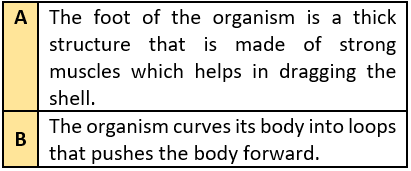
(a) A=fish, B=snail
(b) A=snail, B=snake
(c) A=bird, B=cockroach
(d) A=snake, B=earthworm
Ans.9. (c) Earthworm
Ans.10. (b) A=snail, B=snake
Hint: Compare the characteristics features of body movements of various organisms.
Question.11. The image shows the movement of snake and snail.
(a) In snakes, bones are present that are absent in snails.
(b) In snails, the thin muscles are more compared to snakes.
(c) In snakes, thick muscles are present that are absent in snails.
(d) In snails, the number of bones is more compared to snakes.
Question.12. Both cockroaches and birds have wings to fly in the air. However, only cockroaches can climb on the walls. What is the likely reason for this?
(a) They lack muscles.
(b) They have hollow bones.
(c) They have strong and broad wings.
(d) They have three pairs of modified legs.
Ans.11. (a) In snakes, bones are present that are absent in snails.
Ans.12. (d) They have three pairs of modified legs.
Hint: Predict the possible reasons for animals showing different gaits.
Question.13. How can fishes flow around easily in the water?
(a) Due to small-sized body
(b) Due to streamlined body
(c) Due to the presence of thin skin
(d) Due to the presence of scales on their body
Question.14. Which of these represents one of the reasons that enable birds and NOT humans to fly?
(a) They have long bones.
(b) They have extra forelimbs.
(c) They have strong hind bones.
(d) They have hollow and light bones.
Ans.13. (b) Due to streamlined body
Ans.14. (d) They have hollow and light bones.

